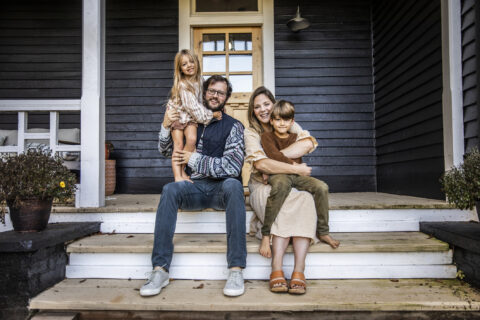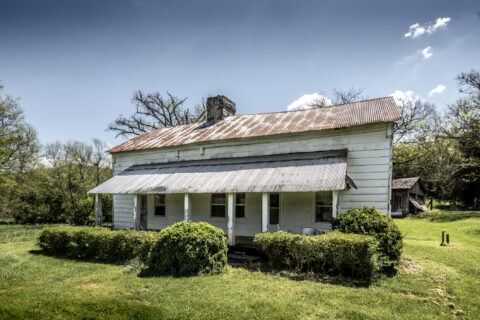Since 2020, the share of renter households has been growing rapidly. Renters now make up more than a third of all U.S. households.
Renters represent a robust and diverse group of people from all demographic backgrounds:
- On average, renters are younger than homeowners—median age of 42 versus 52, respectively.
- Rental households tend to have fewer people and are more likely to be made up of unrelated individuals — single individuals, single-parent families, and non-family households make up nearly two-thirds of renter households.
- The share of older renters is growing rapidly. Between 2009 and 2019, the number of renter households headed by a person age 65 and over increased by 43 percent.
- People of color are more likely to be renters. The share of renter households headed by a person of color (48 percent) is nearly twice that of homeowner households (25 percent).
How Is the Rental Market Changing?
In virtually every metropolitan area, median rents have been on the rise over the past decade, especially in already high rent metropolitan areas. While there are myriad reasons for rising rents, material, labor, and land prices play a major role in market-wide cost increases. Materials and labor costs doubled between 2001 and 2019 and continue to climb.
Similarly, land prices increased 16 percent year-over-year in the second quarter of 2021. Subsequently, median asking rent for newly completed apartments rose $111 between 2020 and 2021 ($1,604 per month versus $1,715 per month). The number of low-cost units has dramatically declined; units costing less than $600 per month fell by 3.9 million between 2011 and 2019. In 2023, the hourly wage a person working full-time needs to earn to afford a one-bedroom apartment is $23.67 – more than triple the federal minimum wage.
Housing affordability, for all renters across the country, is an increasingly salient topic as rising costs begin to have serious implications.
How Does This Affect Renters Who Are Black, Indigenous and People of Color?
People of color are more likely to be renters, reflecting the historic disparities in accessing opportunities for homeownership due to discriminatory lending and legal and real estate practices.
Black households are overrepresented in the lowest income groups. Black households make up 12 percent of all households but make up 27 percent of renters earning less than $15,000 annually. Black households are also overrepresented in the rental market generally, with 58 percent of Black households renting their housing in 2019 compared to 28 percent of White households. Comparatively, 52 percent of Hispanic households, 43 percent of American Indian/Alaskan Native households, and 39 percent of Asian households rented their housing.
The geographic concentration of rental housing also perpetuates racial and socioeconomic segregation by concentrating poverty. Regardless of income, nearly half of Black, Native American, and Hispanic renter households live in neighborhoods with at least 20 percent poverty in 2019. This spatial concentration of poverty has measurable effects on the socioeconomic conditions of renter households of color. At the 60th percentile, a full-time White worker can afford a two-bedroom rental home at fair market rent; comparatively, a full-time Black or Latino worker at the 60th percentile, respectively, cannot afford even a one-bedroom rental home.
Where Are Renters Living?
Across the country, renter households are more likely than homeowners to live in the central cities of metro areas where there is more rental housing available. The Northeast region of the country has the largest share of rental units in buildings with at least 20 apartments (32 percent), as well as a higher concentration of multifamily buildings with two to four units. In terms of affordability, the Midwest had the largest share of low-rent housing in 2019, with 35 percent of units being rented for less than $600 monthly. On the metric of housing wage, the hourly wage a person working full-time needs to earn to afford a two-bedroom apartment, California is ranked as the most expensive state in the country at $42.25. On the same metric, Arkansas is ranked least expensive at $16.25.
How Has Rental Housing Stock Changed Over Time?
In the last decade, the construction of larger multifamily buildings has increased, accounting for most of the recent growth in rental stock. Between 2014 and 2019, the growth in total rental housing stock was driven almost entirely by the net addition of 1.7 million in buildings with 20 or more units. This growth in multifamily production mostly targets the high end of the rental market; in 2022, the median asking rent for new units reached $1,805 – an increase of 7 percent from the median in 2015. As the nation’s rental stock continues to move toward large multifamily projects, the supply of smaller rental buildings is declining. Between 2014 and 2019, the number of single-family rentals dropped by 770,000 units and multifamily buildings with two to four units dropped by 270,000 units.
Existing housing stock is also aging out of its prime, with 3.3 million occupied rental units being considered at least moderately inadequate in 2019. Older rental units are more likely to have structural deficiencies and be considered inadequate; 11 percent of rental stock built before 1940 is considered inadequate. Despite rapid growth in the construction of new rental stock, the aging of existing stock coupled with astronomical demand for new housing is challenging cities, towns, and villages across the country to reassess local housing conditions and availability.
The rental market is experiencing shifts in how housing is owned and managed. Institutional investing is playing an increasingly large role in the ownership and management of the country’s rental housing stock. Since the COVID-19 pandemic, institutional investors have purchased more and more existing single-family homes. Specifically, Texas and other Sun Belt states have seen a dramatic increase of single-family rental homes owned by institutional investors. A particularly popular form of institutional investor-backed housing is built-to-rent housing, which involves single-family homes that are built for the purpose of being rented out to tenants. Texas is also a major market for built-to-rent housing and contains several fast-growing metropolitan areas which have been prime for new built-to-rent subdivisions.
Learn More
To learn more about how to develop or refine your local eviction prevention strategy, read NLC’s publication, Eviction Prevention: A Guide for Local Governments. This publication guides local governments through a step-by-step process and menu of programs offering to develop effective interventions that are responsive to community needs.
Interested in becoming an NLC member? Click the button to start your membership application now.








